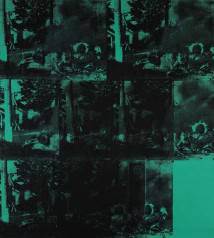
The Getty Center in Malibu, California
THE J. PAUL GETTY MUSEUM ANNOUNCES NEW MANUSCRIPTS ACQUISITION
A Rare Example of 13th Century Gothic Illumination in England, the Northumberland Bestiary, Enhances the Manuscripts Collection
]]>
June 1, 2007
LOS ANGELES-The J. Paul Getty Museum announced today the acquisition of one of the world’s finest examples of English Gothic manuscript illumination. A quintessential example of the particularly English tradition of illuminated bestiaries, the Northumberland Bestiary dates to the 13th century-the height of the popularity of these illustrated texts that served as medieval encyclopedias about animals. The tinted drawing technique was also particular to the period and is considered one of the key contributions of English medieval art, as is evidenced in this manuscript by its exquisite and lively animal forms.
“The acquisition of this rare bestiary significantly strengthens the Museum’s representation of the important medieval tradition of manuscript illumination,” explains Michael Brand, director of the J. Paul Getty Museum. “Visually and textually linked to three companion manuscripts-currently in the distinguished collections of the Morgan Library in New York, the British Library in London, and the National Library, St. Petersburg-the Northumberland Bestiary was the only one of this major grouping that remained in private hands. We are delighted that this new acquisition allows the public the opportunity to view this important work for the first time.”
Later this month, the Northumberland Bestiary will join many of the Museum’s most popular illuminated manuscripts-including its two French bestiaries-in Medieval Beasts , the exhibition of animal images currently on display, through July 29, 2007, at the J. Paul Getty Museum at the Getty Center.
The Northumberland Bestiary
A bestiary is an illuminated text that presents the characteristics of animals-both real and fanciful-as symbolic reflections of man’s relationship to the divine, in order to provide readers with moral lessons. Each animal is represented by a short text that describes its appearance and behavior, which is then animated in an illustration. Given the understanding of every animal as a direct reflection of God’s overall plan for the world, the logical beginning for a bestiary is the story of the creation of animals. The Northumberland Bestiary continues this tradition with an extraordinary full-page miniature depicting Adam naming the beasts of the world, ranging from soaring hawks and lively monkeys to fearsome griffins and serpent-like dragons.
A Flying Fish and a Sea Creature will be on view in the Medieval Beasts exhibition. The fish-known for racing against ships until it grew tired and dove into the sea-was a parallel for those who commit to a life of virtue and then succumb to sin once again, while the sea creature-who would lie still until sailors built a fire on its back and then plunge back into the sea drowning the hapless men- was a metaphor for the devil who deceives the faithful and lures them down to hell.
Given the lively and varied descriptions of the creatures, it is not surprising that the bestiary was one of the most popular illustrated texts of the 12th and 13th centuries. It is also a particularly English phenomenon; over half of the existing Latin bestiaries are English in origin, and it is believed that all the finest were made in England.
About the acquisition, Thomas Kren, curator of the Manuscripts Department at the J. Paul Getty Museum, said, “The illuminations of the Northumberland Bestiary , which was most likely made for the personal use of a wealthy individual, stand out as some of the best that the tradition has to offer. The vigor and spontaneity of the drawings are a hallmark of the period style.” Kren continues, “As one the finest manuscripts of any kind to have been in private hands, the Northumberland Bestiary is a truly rare and special acquisition.”
Follow us on:


